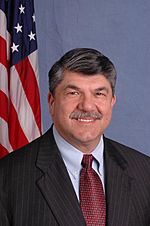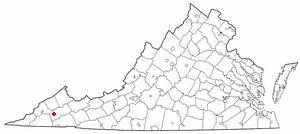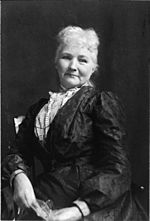Pittston Coal strike facts for kids
| Date | April 5, 1989 – February 20, 1990 |
|---|---|
| Location | Primary locations:
|
| Also known as | Pittston Strike of 1989 |
| Participants | UMWA, Pittston Coal Company, and Nonunion members |
| Outcome | Health and retirement benefits reinstated to miners. UMWA fined $64 million dollars in fines. Pittston Company lost 2/3 of production. |
The Pittston Coal strike was a big protest by coal miners in the United States. It was led by the United Mine Workers of America (UMWA) union against the Pittston Coal Company. The strike lasted from April 5, 1989, to February 20, 1990.
Miners went on strike because Pittston Coal stopped their health care benefits. This affected about 1,500 retired miners, widows, and disabled miners. The company also refused to pay into a special fund for miners who retired before 1974. Miners also felt the company was not talking fairly with their union. Pittston Coal said they had to cut benefits because coal prices were falling.
The strike mainly happened in mines in Virginia. Some mines in West Virginia and Kentucky were also affected. Miners and their families held protests and stopped working. At its busiest, about 2,000 miners stayed at a place called Camp Solidarity every day. Thousands more sent money or joined in quick, unplanned protests. These protests involved about 40,000 people. Women played a key role by forming groups like the Daughters of Mother Jones. This helped the miners win their fight.
Contents
Why the Strike Started
During the 1980s, the price of coal went down. This made it harder for coal companies to make money. Many companies started hiring workers who were not part of a union. These workers often earned less money.
By 1987, Pittston Coal was not doing as well as before. Its coal production was very low. Pittston Coal used to work with a group called the Bituminous Coal Operators (BCOA). This group helped set up health and retirement benefits for workers. But Pittston mines kept losing money. So, in 1987, Pittston Coal left the BCOA. They wanted to create their own benefit plan with the UMWA union.
Through collective bargaining, the UMWA and Pittston Coal made two retirement plans. One was for miners who retired before 1974. The other was for those who retired after 1974. They hoped this would help the company earn a profit.
In 1988, Pittston still struggled to pay for benefits. The cost per miner had gone up a lot. To save money, Pittston made health care more expensive for miners. They doubled the amount miners had to pay first (deductibles). They also lowered how much the company paid from 100% to 80%. Benefits for miners who retired before 1974 were stopped.
These changes were still not enough for the company to make a profit. So, Pittston decided to keep the mines open 24 hours a day, seven days a week. Workers would not get paid extra for overtime. Pittston also removed rules that protected miners' jobs. This meant miners might lose their jobs if mines were sold or leased. Miners were working longer hours with higher health care costs.
The UMWA union tried to make a deal with Pittston. But the company did not respond. When it was time to renew the health care and retirement plans, Pittston refused. This left about 1,500 people without health care. These were not just miners, but also their families, widows, and disabled miners in Virginia.
UMWA Declares Strike
In April 1989, miners had worked for 14 months without benefits. So, UMWA president Richard Trumka announced a strike against Pittston Coal. About 2,000 UMWA members who worked for Pittston stopped working. They went to the picket line to protest.
Pittston responded by hiring new workers to replace the strikers. The company also got help from state police. Police escorted the new miners and coal trucks past the picket lines. This helped Pittston keep production going.
The UMWA used civil disobedience to get attention for the miners. The union asked everyone to keep their actions peaceful. However, some miners still used violent methods during the strike. The strike got a lot of attention from the news. People came from all over the country to support the UMWA. About 50,000 people visited southwest Virginia during the strike.
During the strike, Pittston's coal production dropped by about one-third. This was because the strike happened at several Pittston mines. The main mine involved was the Clinchfield Coal Company in Dickenson County, Virginia. Other mines that joined the strike included the Moss 3 Preparation Plant in Russell County, Virginia.
Pittston refused to give in to the UMWA's demands, even though they were losing money. The strike continued. The UMWA also started to struggle financially. As the strike went on, union members were paid much less. They received less than $210 a week, which was much lower than their usual $640 a week.
Even with less pay, union members trusted the UMWA to reach a deal. Richard Trumka helped keep the miners' spirits high. He knew that giving in to Pittston would make other mining companies cut benefits too. On August 20, 1989, a reporter asked Trumka how long he thought the strike would last. Trumka famously replied, "People keep asking how long we can hold out. The answer: one day longer than Pittston."
The strike continued until February 1990. A deal was finally made after many court hearings and agreements. The miners of Pittston Coal Company were able to get their health and retirement benefits back.
Strike Tactics
During the Pittston strike, the UMWA wanted to use only nonviolent ways to protest. Many union members followed this idea of civil disobedience. They found creative ways to share their message. These included mass sit-down protests and blocking roads.
However, some miners ignored the union's request. They used violence to show their anger towards Pittston Coal. By the end of the strike, over 4,000 people had been arrested for their actions.
Civil Disobedience
The UMWA tried to keep strikers focused on civil disobedience. They often stepped in to stop any violent actions. Union members used many nonviolent protest methods. These included standing and blocking roads where coal trucks traveled. They also held large sit down strikes and picketed outside Pittston coal mines. These peaceful protests helped the UMWA gain support from people across the country.
Another peaceful protest method was Camp Solidarity. This camp was set up in southern Virginia, where most of the protests happened. Supporters came from all over the country to show their anger at Pittston. But there was no place for them to stay. Local towns offered some shelter, but it was not enough.
Union supporters found a solution. A local park near Castlewood, Virginia was turned into a campground. A small building with bunk beds was built. An existing snack bar was opened to feed the people staying there. Since it was a park, there was plenty of space for campers and tents.
Because of the protests, the UMWA was fined over $30 million by a judge. Many people saw this as unfair. So, a miner and union official named Jackie Stump decided to run for state legislature. He ran against the judge's father. Stump, who had been in jail with UMWA vice president Cecil Roberts during the strike, won the election by a large margin.
Moss 3
One very important act of civil disobedience was called Moss 3. The strike had been going on for months, and no deal seemed near. Union members were starting to lose hope. Thousands had been arrested, and a lot of money had been spent. Union members knew they had to do something big to boost spirits and show Pittston they would not quit.
Union leaders secretly planned Moss 3. It was named after Pittston's Moss 3 Preparation Plant, their main coal processing site. They wanted Pittston to know nothing about it. Officials chose 99 union members from Virginia, West Virginia, and Kentucky. These miners met in Virginia and learned about the plan.
Moss 3 was a surprise mass sit-down protest inside the plant. The 99 strikers walked into the plant peacefully and sat down. This stopped all production. Meanwhile, thousands of supporters gathered outside the plant. They cheered on the strikers inside. About 5,000 supporters were outside the plant at the peak of Moss 3.
The sit-down strike inside Moss 3 lasted from Sunday to Wednesday. After four days, the strikers felt they had made their point. They walked out. Local miners said Pittston had called in the National Guard and state police. They were told to remove the miners if they did not leave soon. Pittston owners thought the miners left to avoid being arrested.
Women's Involvement
Even though the Pittston strike was about coal miners, many supporters were not miners. Most of the support came from women. Many were wives or daughters of miners. Some had no connection to Pittston Coal or mining at all.
Some women sat in roads, blocking traffic. Others drove very slowly in front of coal trucks to cause delays. Two groups of women supporters formed during this time: "The Daughters of Mother Jones" and "The Freedom Fighters." At the busiest time of the strike, about 500 women were involved. Most of them were housewives.
Daughters of Mother Jones
One group of women was called the "Daughters of Mother Jones." They named themselves after Mary Harris Jones, also known as "Mother Jones." She was a famous union activist for miners. The Daughters helped the miners by organizing housing, preparing food, and raising money.
The Daughters of Mother Jones also protested regularly outside Pittston Coal's main office in Lebanon, Virginia. They worked with UMWA leaders. They picketed every Monday and Wednesday to get media attention and support for the miners. On April 18, 1989, 39 women went into the Pittston Coal headquarters. They held a sit-down protest for 36 hours. This stopped coal production for a day and a half. They refused to tell the company their names. Instead, they called themselves the Daughters of Mother Jones. They left on their own after 36 hours.
Freedom Fighters
Another women's group was the Freedom Fighters. This group ran Camp Solidarity in Castlewood, VA. The Daughters of Mother Jones provided food and lodging on land given by a retired UMWA miner. The Freedom Fighters also set up a phone bank. They used it to tell people what food to donate and how much was needed. After the Pittston strike, the Freedom Fighters continued to help miners across the United States get their benefits.
Aftermath of the Strike
In February 1990, Pittston Coal Company and the UMWA reached a settlement. The miners working for Pittston would get their health and retirement benefits back. Pittston Coal Company also had to pay about $10 million for the retirement plan for miners who retired before 1974. In return, Pittston was allowed to operate seven days a week. However, they had to close from 8 AM to 4 PM on Sundays. Miners also got a rotating schedule. Every 28 days, they would work one week for 4 days, 10 hours each day.
Both sides lost a lot of money. Pittston lost money because production slowed down. The UMWA spent a lot organizing the strike. At the end of the strike, the UMWA was fined about $64 million. These fines were for road blockages and other acts of civil disobedience. Union officials were personally charged $13,000 a day. The union was charged $200,000 for their actions at Moss 3.
Many people thought the fines against the UMWA were unfair. They asked for the charges to be dropped. Most of the charges were cleared. In return, union officials had to do 10,000 hours of community service.
Miners were happy that a deal was reached and they would get their health and retirement funds back. But because they were without benefits for so long, many had financial problems. During the strike, they had to pay for health care themselves. Many miners did not have enough money to do this. As a result, many miners ended up in debt.
A direct result of the Pittston Strike was the creation of the Coal Act in 1992. This law made it mandatory for mining companies to provide health and retirement benefits for their workers.
After the strike, many of Pittston's coal plants were sold to Alpha Natural Resources. Pittston left the coal business in 2001. Alpha became one of the top three coal companies in the nation. Alpha Natural Resources later declared bankruptcy in 2015.
Moss 3 was torn down after the strike. A new plant was built and named after it. That new plant has also been torn down, and the land is now natural again. The recreational park that became Camp Solidarity is now an open field. Even though the places have changed, the feeling of what the Pittston miners achieved has not. They won benefits for themselves and helped thousands of other miners get health care and retirement funds for years to come.
The case of the UMWA vs. Pittston Coal Company did not fully end in 1990. The fines, over $60 million, were not settled until 1994. Pittston agreed to drop most of the charges. However, since the case was in the court system, many courts wanted the UMWA to pay all the fines. The UMWA fought all the fines, and the case remained undecided for many years.
|




